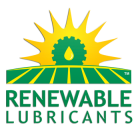
As is often the case with people who start using biobased products, biodiesel gave Marine Superintendent Dennis Donahue his first experience with the products at the Great Lakes Environmental Research Laboratory (GLERL) in Muskegon, Michigan.
Donahue’s uses have come a long way since that first trial in 1999. For the last two years, three of GLERL’S diesel ships ran completely on biobased (rather than petroleum-based) products. Those made from soybean oil are ISO 32 & 68 hydraulic oil, 90W gear lube, lithium grease, general purpose cleaners, soy 2-cycle oil, diesel crank case oil and biodiesel.
Being part of the National Oceanic and Atmospheric Administration’s (NOAA) research division, Donahue says that it’s not only the responsibility of his organization and his facility, but also his personal duty to do his utmost to protect the environment. Go to www.soybiobased.org to read a full profile on how GLERL vessels ply all of the five Great Lakes in a “Green Ship Initiative” with biobased products. These products, says Donahue, have been tested under the rigors of the marine environment in both warm and cold climates and have been found to be equivalent to petroleum-based products’ performance.
Because of the potential for biobased products to create new markets for soybeans, U.S. soybean farmers have invested millions of dollars to research, test and promote biobased products. Much of this work was done through the United Soybean Board (USB), which is composed of 64 U.S. soybean farmers appointed by the U.S. Secretary of Agriculture to invest soybean checkoff funds. As stipulated in the Soybean Promotion, Research and Consumer Information Act, USDA’s Agricultural Marketing Service has oversight responsibilities for the soybean checkoff.
